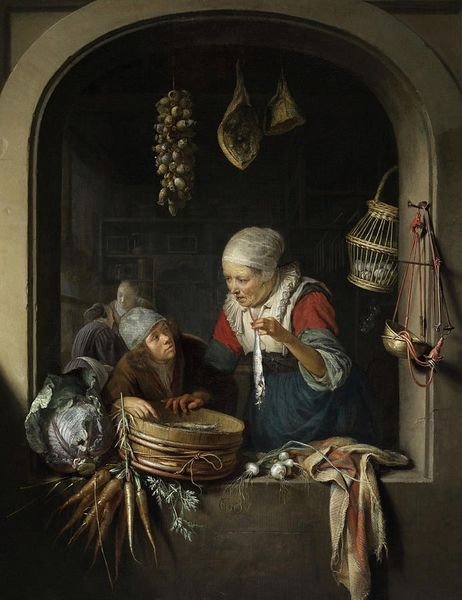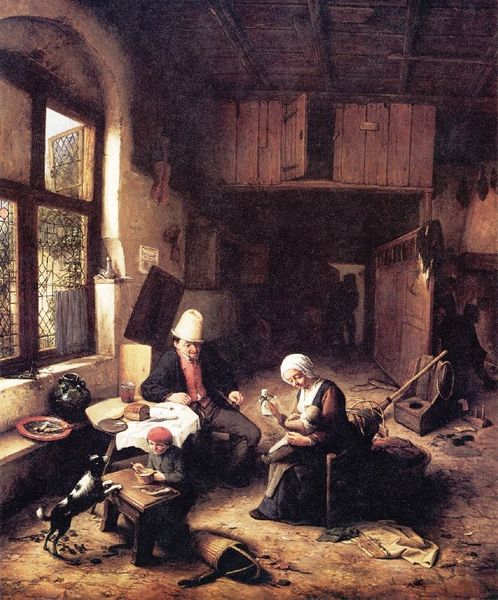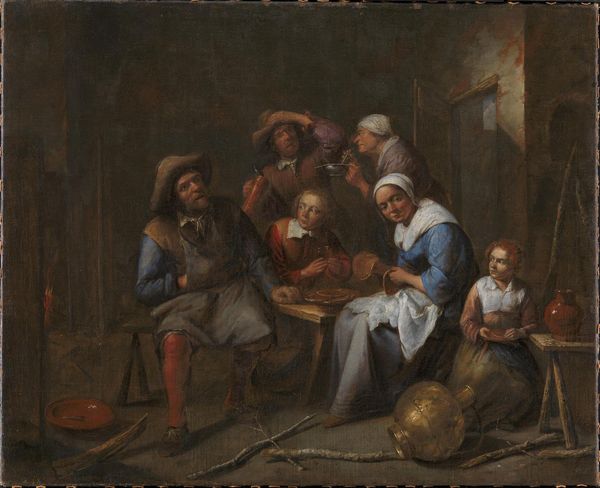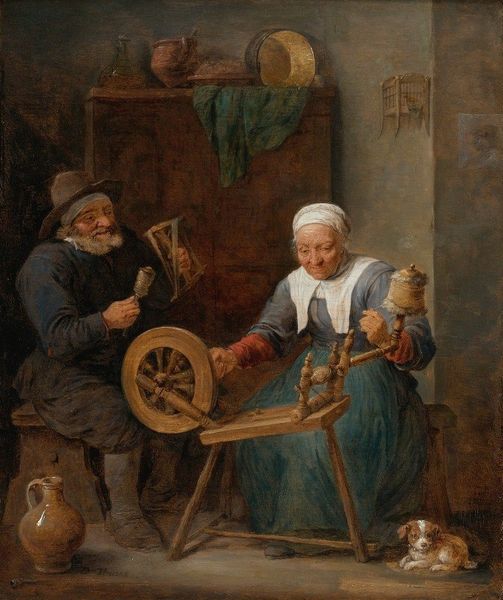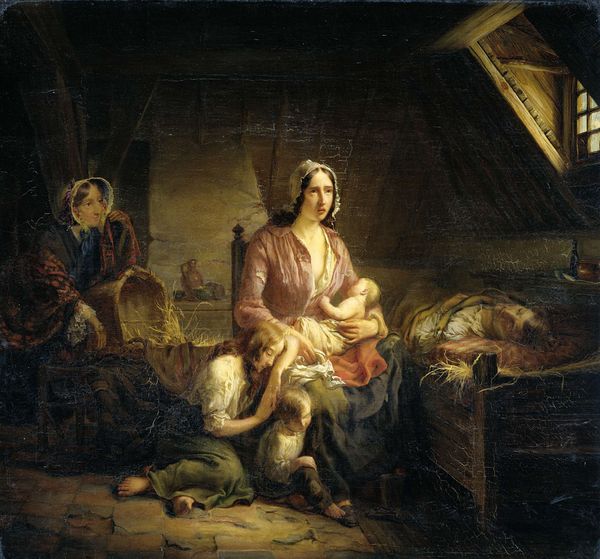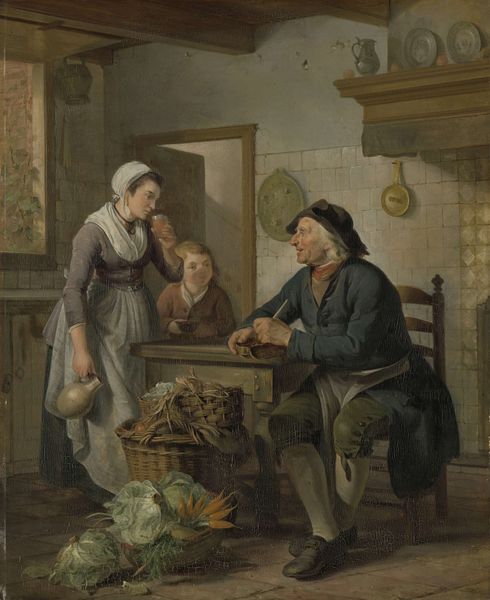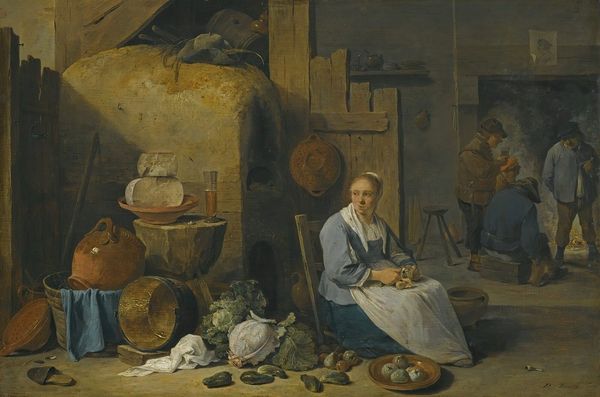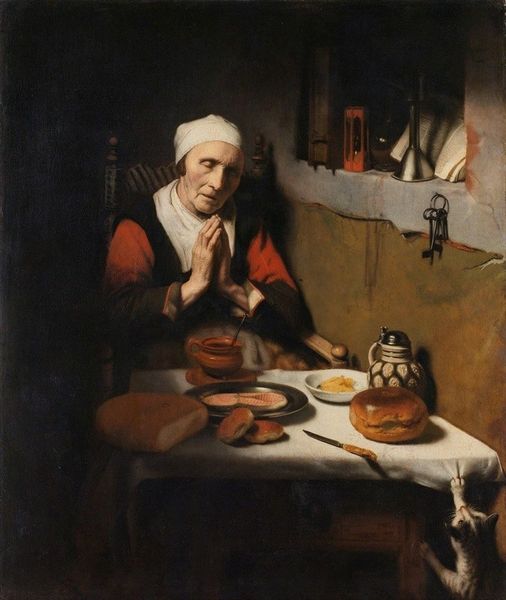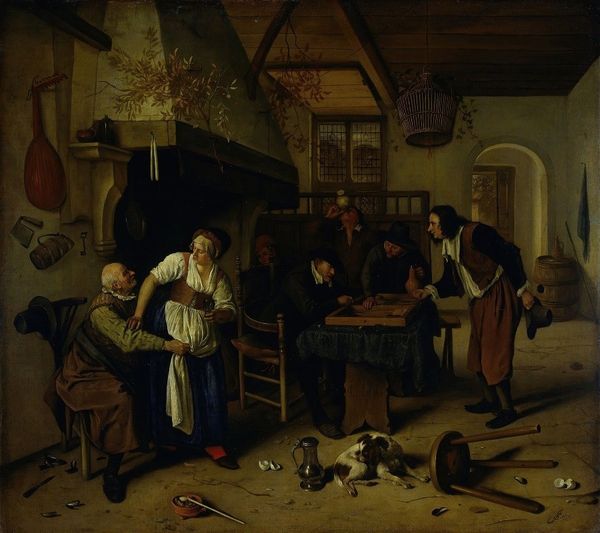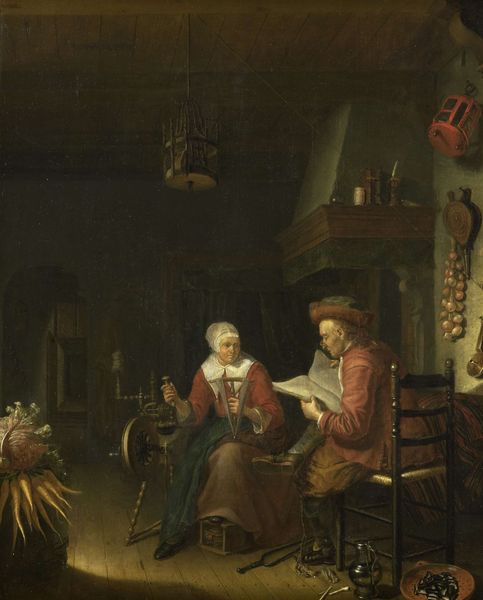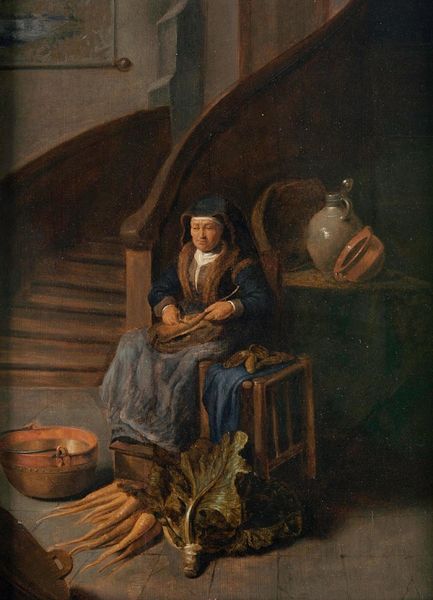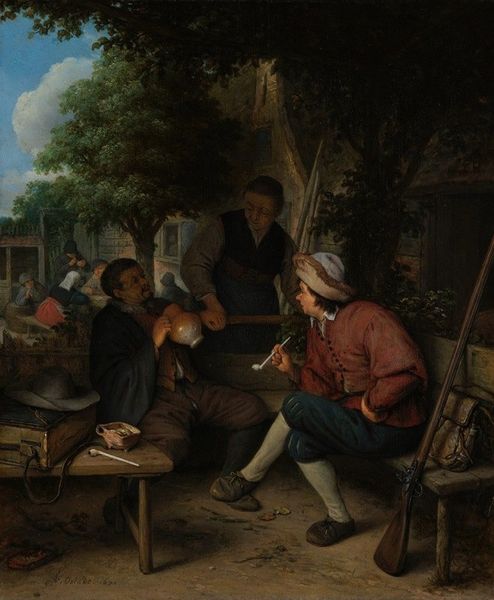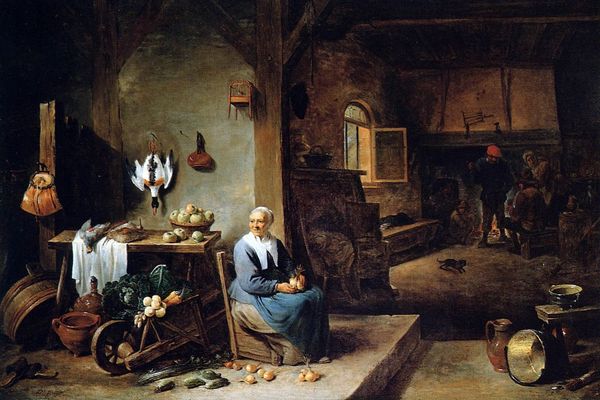
painting, oil-paint
#
portrait
#
dutch-golden-age
#
painting
#
oil-paint
#
oil painting
#
genre-painting
#
realism
Copyright: Public domain
Curator: Gerrit Dou’s work, titled "The Prayer of the Spinner", at the Alte Pinakothek in Munich, presents a moment of quiet domesticity. Editor: My first impression is one of subdued light, creating a heavy, almost somber mood. You can almost smell the age of the pigments, feel the coarse texture of the linen. Curator: It's quintessential Dutch Golden Age genre painting, a period deeply interested in representing daily life with both realism and symbolism. We see how these themes, along with the art market’s demands, encouraged such scenes. Editor: Absolutely, and looking closer, I see the tangible evidence of labor everywhere – the spindle itself, of course, but also the humble meal laid out, suggesting both subsistence and routine. How was Dou viewed by his contemporaries, I wonder, as a producer of objects himself? Curator: He was greatly admired, one of the founders of the Leiden school and he built a very successful career and his style influenced a number of artists including his student Frans van Mieris the Elder. He enjoyed the patronage of very important people and he received a good price for his works, which he knew how to negotiate very well. Editor: And what do you think this painting says about labor’s value within that context? Does the woman’s piety elevate the work or merely resign her to it? I’m fascinated by that tension. Curator: I think it legitimizes her role within the household, presenting a vision of honest labor sanctified by faith. There is a definite link with contemporary morals in terms of how one was seen in Dutch society. It also provides a safe space which could bring inner peace. Editor: And the details in the setting become crucial for our interpretation - that little sleeping dog, for example. A small comfort perhaps? Curator: Exactly, everyday details brought to life. So yes, details become the building blocks of narratives for understanding social and moral conventions of this time. Editor: It does makes you ponder how such commonplace materials elevated to the realm of art reflect the evolving concepts of skill, production and its relation to spirituality at the time. It’s much more than meets the eye at first glance. Curator: Precisely, viewing it through a contemporary lens highlights its nuanced socio-cultural undertones. It invites you to really dive into the life and history of that era.
Comments
No comments
Be the first to comment and join the conversation on the ultimate creative platform.
